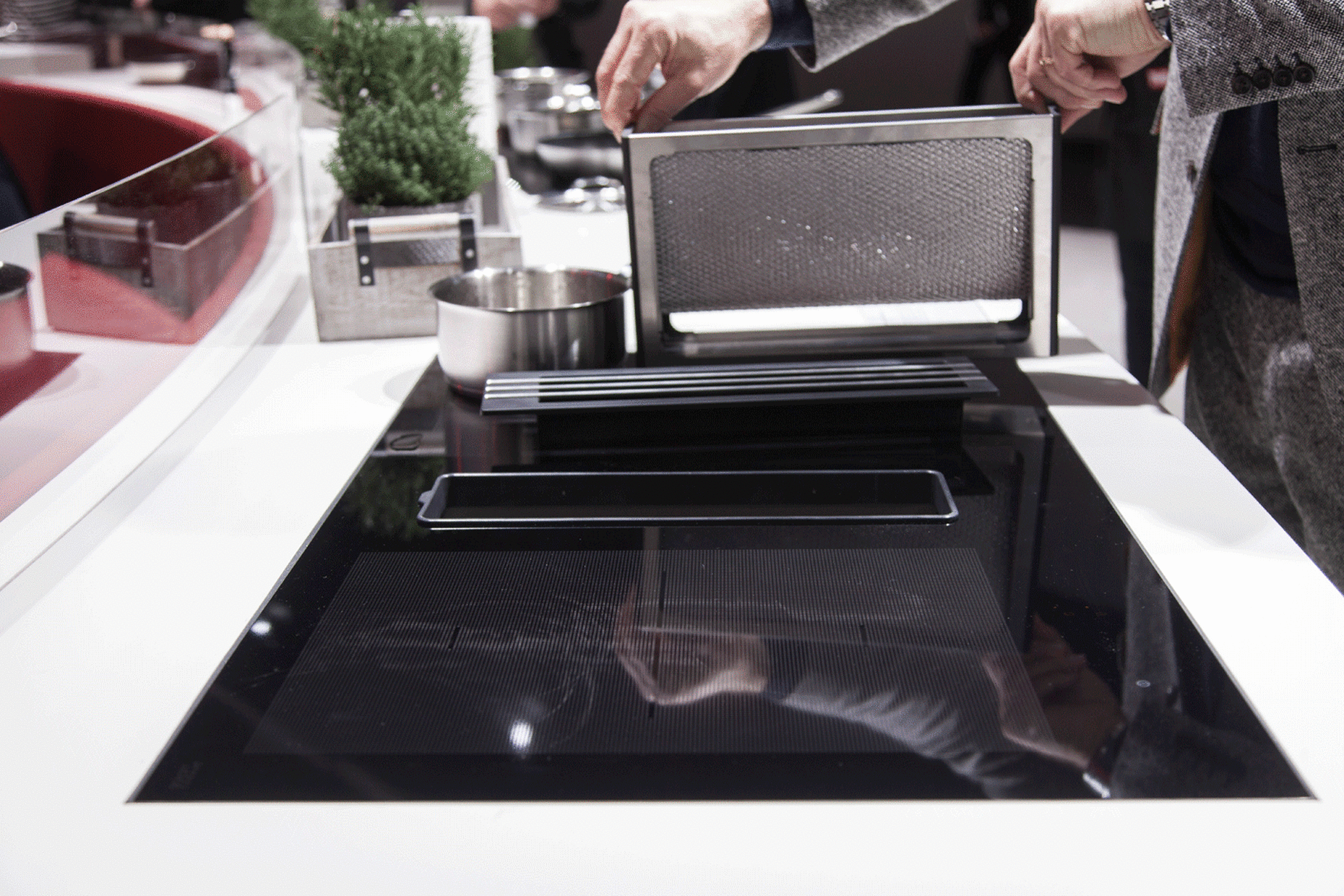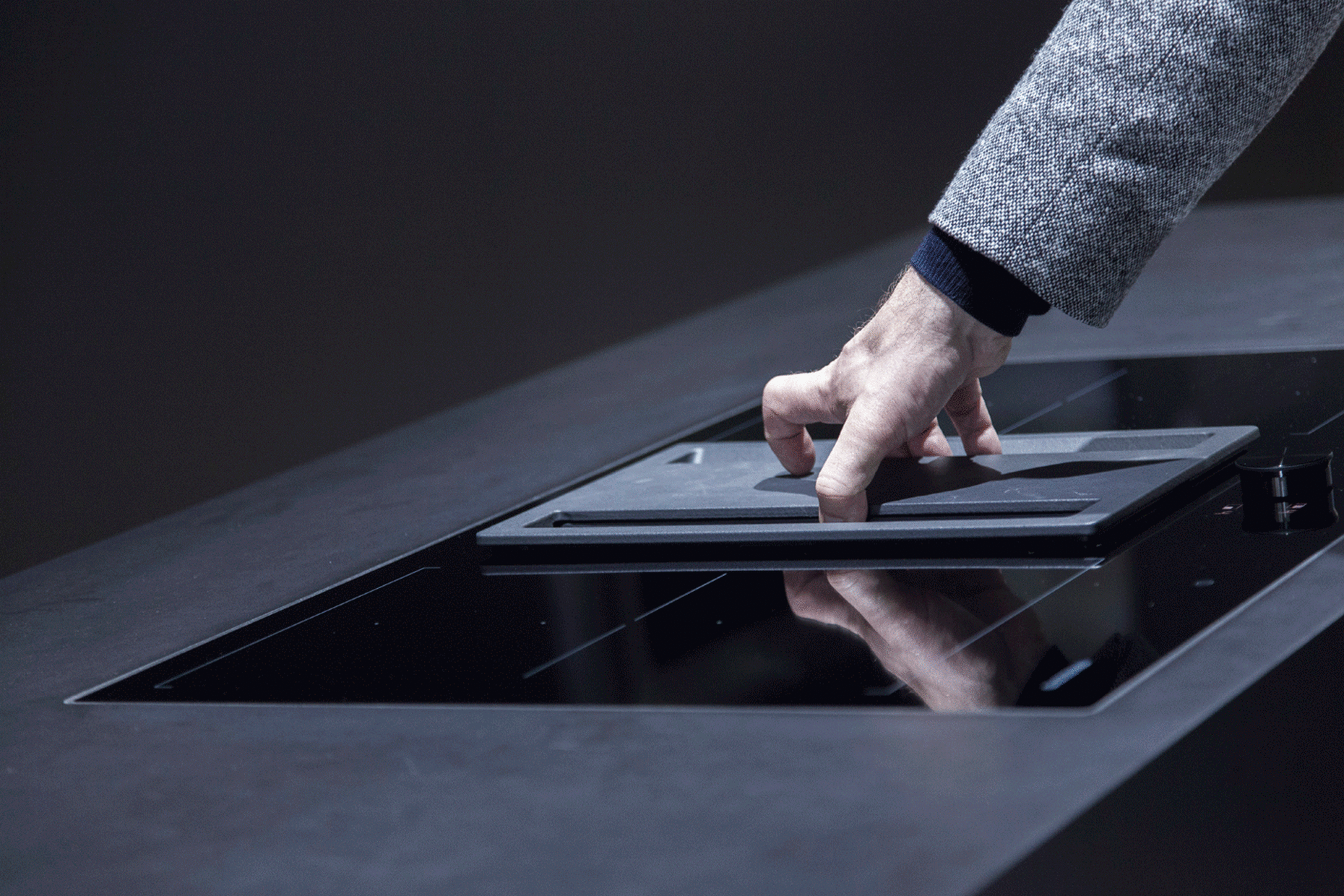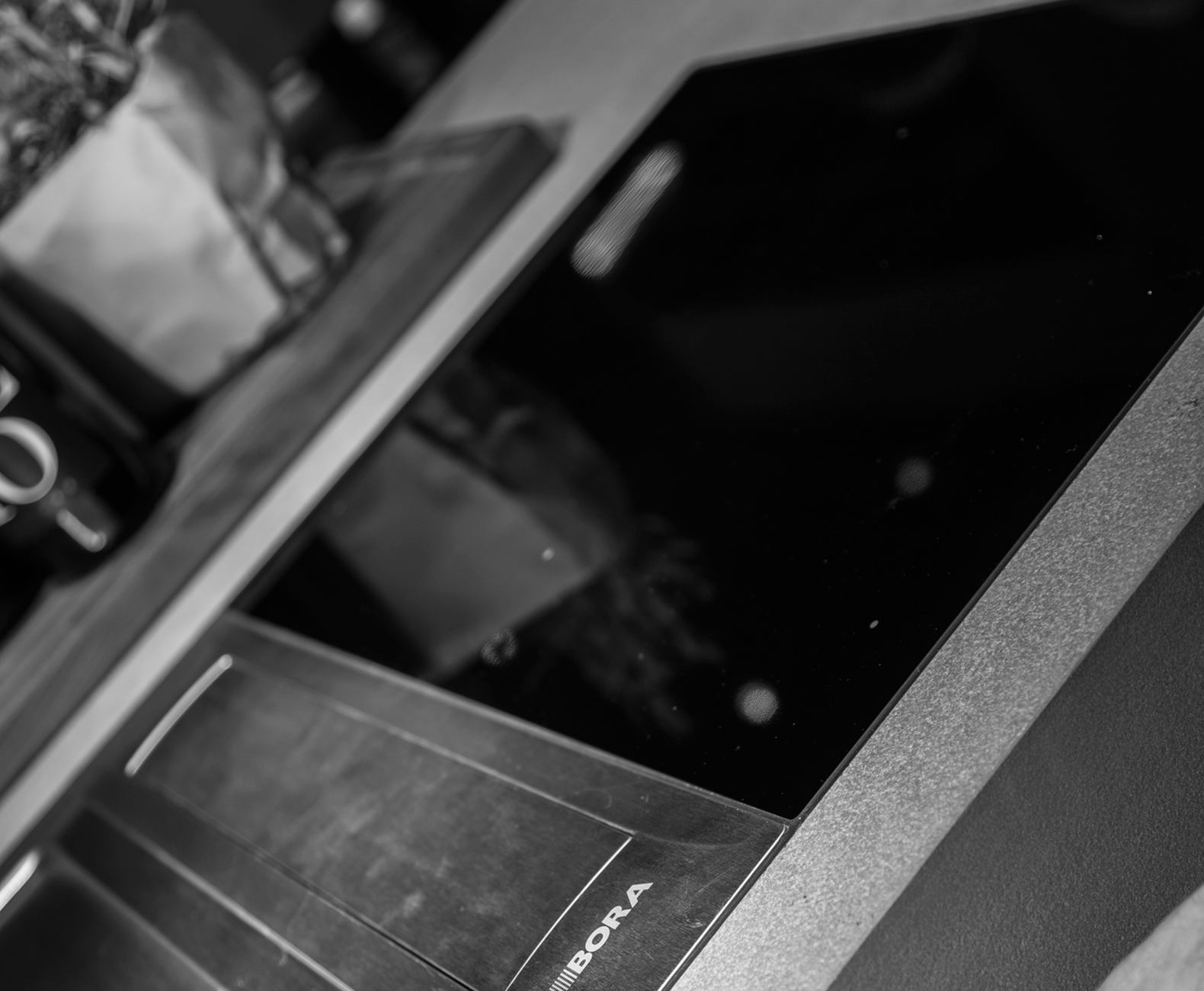Living Kitchen 2017
Hyper-Ventilate
No room in the apartment has changed more radically in recent years than the kitchen. With the triumph of unit-fitted kitchens in the post-War period it mutated into an ergonomic workshop requiring a minimal footprint, and has of late morphed into a living space that is often adjacent to the living and dining spaces, if it does not actually open out onto them. In which case, all too obvious and trivial technology upsets the ambience. A key element of unit kitchens had forced this trend to bring a change in type with it: extractor hoods. The first electric extractor hoods designed in the mid-20th century to free the kitchen of fat and food smells were located above the hobs, just as in previous centuries the chimney hood was positioned above the hearth. Needless to say, there had to be a considerable distance between the fat-spitting pots and the hood, as otherwise the chef wouldn’t be able to stir them.
In 1976, Gaggenau’s VL 011 downdraft ventilator took a completely new approach to the problem. It was essentially paradoxical: The smoke was no longer to be extracted upward but sucked downward. Gaggenau’s idea: An electric extractor next to the hob would be far closer to the source of the smells and would extract the steam immediately at the point where it arose. This solution was not broadly accepted in the 1970s, but today fulfills exactly the requirements of modern kitchen users. Neither nasty smells nor bulky electric fitted units disturb the senses in the new kitchen-cum-living spaces. Which is why, before it closed its doors, we toured the Living Kitchen to identify the best of the downdraft ventilators. There are quite a number now on offer.
There were in particular three systems that we found convincing: the Miele TwoInOne, Bora Professional and Gaggenau Flex-induction cooking hob with the integrated series 200 CV 282 downdraft ventilator. In all three the downdraft ventilator is located between the two hobs. The Miele TwoInOne features a combination of so-called vapor extractor and induction top. Controls are included in the user panel integrated into the cooktop – a solution that makes installation easier but has disadvantages compared to classic knobs when it comes to practicality. Fitting the relatively high filter in the Miele ventilator also takes up quite some space.
In the Gaggenau system, the ventilator is likewise positioned between two induction hobs, in this case each boasting two rectangular cooking tops. The downdraft system takes up far more surface space than do the Bora and Miele versions, and extracts the air through two slits. Thanks to its size, Gaggenau’s ventilation system can extract a massive amount of fat and hinges on an ingenious set of protective mechanisms preventing filtrate escaping. The hobs are activated using a so-called Twist Pad on the top: Using a detachable magnetic knob you activate the individual cook tops and regulate their temperature. The system takes a little getting used to and it’s important not to ever lose one of the knobs. Once the hob is turned on everything else happens automatically. The ventilator sensors recognize that you are cooking and immediately adjust output levels to the respective requirements.
With Bora, the visible section of the hob downdraft ventilator is clearly more slender. There is a slit underneath a stainless-steel cover that, once the ventilator is switched on, opens and disappears as if by magic. With the Bora, the ventilator and the two hobs do not form a fixed entity as is the case with Gaggenau and Miele. Customers can choose from a range of different configurations, and can opt, for example, for a Bora Tepan stainless-steel grill on one side of the downdraft and a gas hob or induction hob on the other. All parts of the ventilator system that could be sullied are made of stainless steel and are very easy to remove and clean. The Bora system relies on the customary controls, namely knobs on the front of the stove. Integrated into the knobs are displays, which, once you get used to them, are a real benefit. All in all, the Bora system stands out for its elegance and user friendliness.
All three manufacturers’ systems offer a clear advantage, namely that even when the hob extractor/ventilator is on you can still enjoy listening to music while cooking or chat away. The days when grilling a steak was accompanied by the roar of the extractor hood that you had just knocked your head against are hopefully over once and for all.






